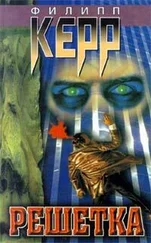‘I don’t have to give her three whole units,’ said Gates. ‘Just two would do it. And being a lot bigger, I can spare more.’
‘That’s just a guess. As you said yourself, you don’t know how a system infected with the virus will react to having fewer red cells. That means less hemoglobin, less oxygen.’
‘Maybe all that is true,’ admitted Gates. ‘But we both know it’s our only option.’
‘Okay. But you get to tell her. She’s not going to like it.’
‘True,’ said Gates. ‘But at least she won’t be dead.’ He clapped Dallas on the shoulder. ‘Think of it this way. You’ve got more of an incentive to succeed now. Revenge never really suited you that much, Dallas. This is a much better motive. Better for you, better for her.’
Shivering inside the space fridge, Cavor said, ‘Let’s hope nothing else goes wrong. I don’t much care for the idea of dying of hypothermia.’
‘I should think there are many worse deaths than that,’ observed Dallas. ‘The way I remember the experience from the simulation, it would be like going to sleep.’ He thought for a moment, and then added, ‘In a cold bed. Anyway, that isn’t going to happen. It’s why we had those shots.’
Before leaving the Mariner, both men had been injected with a medical nanodevice — a delayed-action, molecular-sized machine that was designed to last less than thirty-five minutes before releasing fifty mills of adrenaline into the bloodstream. According to the data from the simulation, it had taken Dallas and Gates thirteen minutes to enter the airlock and climb into their EVA suits, another five minutes to walk from the Mariner to the space fridge, two minutes to climb into the freezer bags, eight minutes to cool down, seven minutes to be carried from the fridge to the electric car, and another two minutes to arrive inside the outer door of the main facility.
‘The adrenaline should be delivered into our systems just before we go through the main door,’ Dallas told Cavor. ‘Just in case we don’t hear Prevezer and Simou.’
Cavor said nothing, feeling colder than he had ever felt in his life. But what really sent a shiver down his spine was the sudden and horrific realization that he had injected the nanodevice into his prosthetic arm. He had quite forgotten that one of his arms was made of silicon, rubber, and plastic. Even as the needle had penetrated the smart latex skin of the prosthetic, it had felt like the real thing. So vivid had been the pricking sensation of the hypodermic, he found that if he thought about it hard, he could still feel the dull ache of it in the nonexistent subcutaneous fat that covered the absent muscle of his upper arm. He simply hadn’t been paying sufficient attention to what he was doing. Cavor cursed silently. That was how he had lost the arm in the first place. How could he have been so careless? Looking back, it was the story of his life. Now he was going to have to concentrate very hard on watching out for what Gates had called the ‘umbles’ — the fumbles, stumbles, and mumbles that were an indication of changes in motor coordination and levels of consciousness. He didn’t dare tell Dallas what had happened; and anyway, it was too late to remedy the situation. If his stomach hadn’t felt so thoroughly chilled, he might have felt sick with fear.
‘Time to get up,’ yelled Prevezer. ‘Come on guys. Bring out your dead. Let’s hear you people up and at ’em.’
‘I’m moving,’ announced Cavor, as he rose stiffly to his frozen feet. In standing up, the top of his helmet was supposed to lift the hinged lid of the electric car, and yet it seemed the lid was already open. Cavor looked up, expecting to see Dallas. But Dallas was only just stirring, still wrapped in his body bag. Cavor shook his head. He must have opened the lid himself, perhaps instinctively, unconscious of what he was doing at the time.
‘Dallas? Are you okay?’
‘I’m okay,’ Dallas whispered numbly, as he got to his feet alongside Cavor, swaying a little, for the car was still moving into the main facility. He might have toppled over the side if Cavor hadn’t caught him.
The car stopped and the outer door started to close, like a silent portcullis. Another minute or so and the car would start again, bringing them within range of the inner door sensors and the electricity that might kill them both. Cavor climbed quickly out, helped Dallas down, and then closed the lid behind him.
‘We’re both out,’ he just had time to tell Prevezer, before the outer door closed, and communications with Mariner were lost. He took a deep breath and switched on the heater that would warm his space suit. When Dallas failed to do the same, Cavor did it for him. The car started forward again, the labyrinth door opening to admit its silent progress.
Dallas took a step toward the airlock door that led into the R&R area. It was several seconds before he took another. ‘I feel like Rip Van Winkle,’ he whispered. ‘Like I’ve been asleep for a hundred years. Not sure if the adrenaline worked or not. How about you?’
‘I felt something working for me,’ said Cavor. That much was true at any rate. Something had kept his brain working when Dallas had almost ceased to function. ‘Not sure if it was adrenaline. Come on, Rip. Let’s get inside. I gotta pee.’
The Mariner’s safe return to Earth would depend on its ability to survive the intense heat generated while reentering the atmosphere. During the descent, the RLV’s nose and the leading edges of the wings would encounter temperatures of as much as twenty-eight hundred degrees Celsius. These areas of the RLV were protected with high-temperature ceramic tiles that were made of a hafnium-silicon compound. The remainder of the RLV’s exterior surface, and the space fridge, being less likely to encounter such intense heat, were covered with similarly white-colored but cheaper and less resistant [120] Manufactured to withstand only eight hundred and sixty degrees Celsius.
tiles. It was with the hafnium-ceramic shield that Simou was now concerned, and to facilitate the repair, he was standing outside the Mariner, on the end of the robot arm he had extended from the payload bay to the nose. A remote-control joystick on the arm of his EVA suit gave him manual control of the arm, enabling him to fetch tools and materials as he needed them. Each of the tiles was approximately eight square inches in area, half an inch thick, and weighed just under two kilos. It was as well that the repair was being carried out in microgravity because the box of fifty tiles Simou had brought from the RLV weighed almost ninety kilos. He had estimated no more than five or six had been lost as a result of the brittle fracture caused by his explosive charge. That he needed to bring so many tiles with him on the robot arm was because there were as many as ten subtly different shapes of tile, each sequentially numbered for easy reference. Having identified the numbers that were missing on the nose, Simou had to find a tile shape of the corresponding number from the box, before replacing it manually, like a piece in a jigsaw puzzle. He attached each tile to the underlying aluminum fuselage with a small tantalum spot-weld from the UHT gun he carried. The hazards of using the gun made the work slow and painstaking, and Simou was almost glad when the Descartes computer interrupted the silence to solicit a progress report.
‘How are your repairs coming along, Mariner ?’
‘This is Mariner ,’ said Simou. ‘In some ways this is easier than it would be on Earth. Of course, welding’s one thing. Cooldown times are another. We won’t know the quality of the welds until it gets dark. So we’ll be a while yet. Maybe ten or twelve hours. Heat takes longer to disperse on the Moon. In a vacuum there are no convection currents to help carry away the heat.’
Читать дальше












